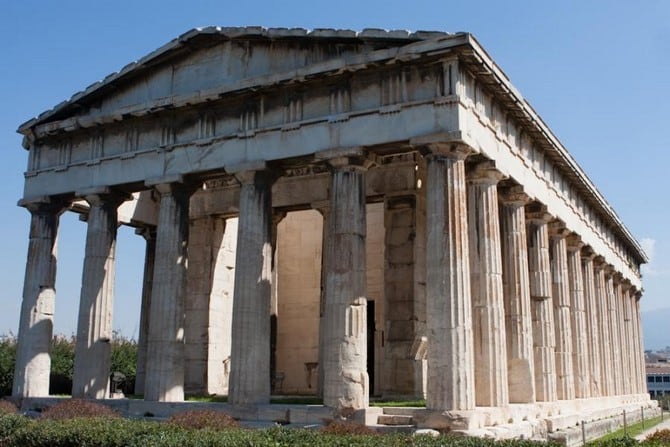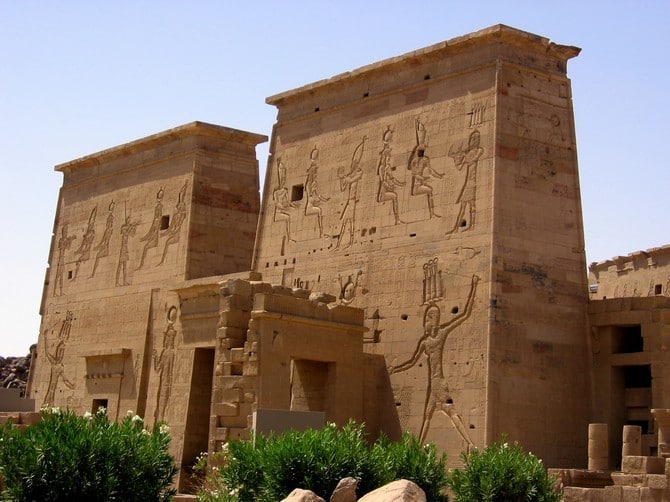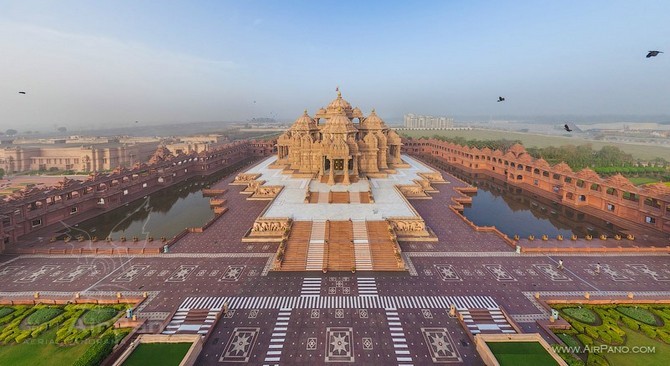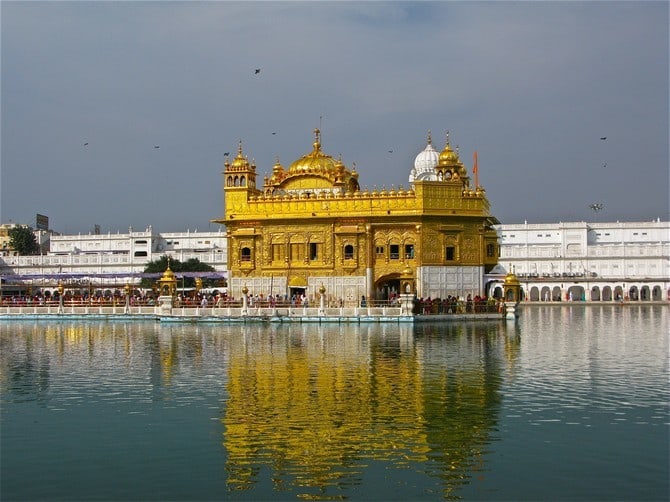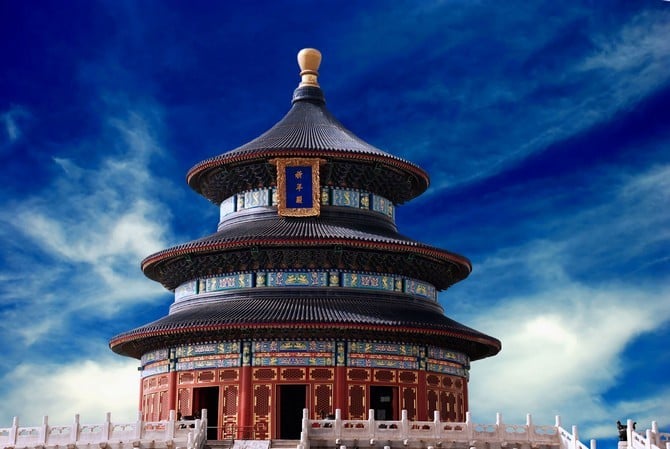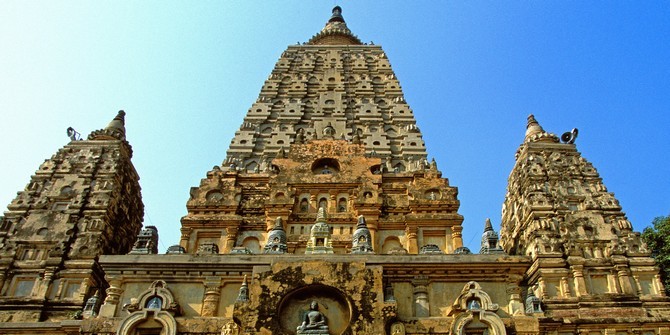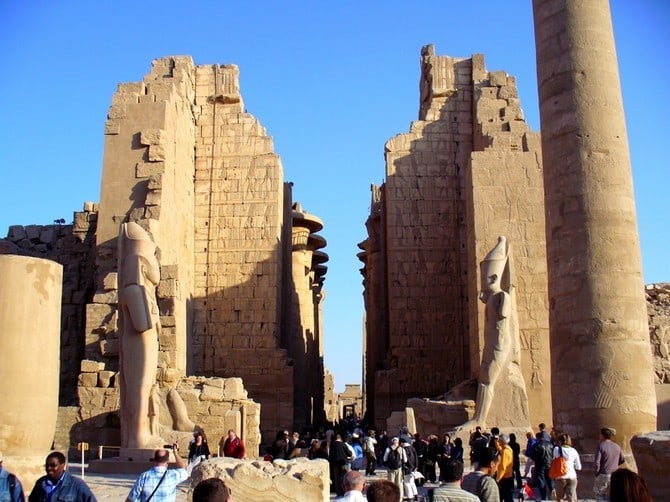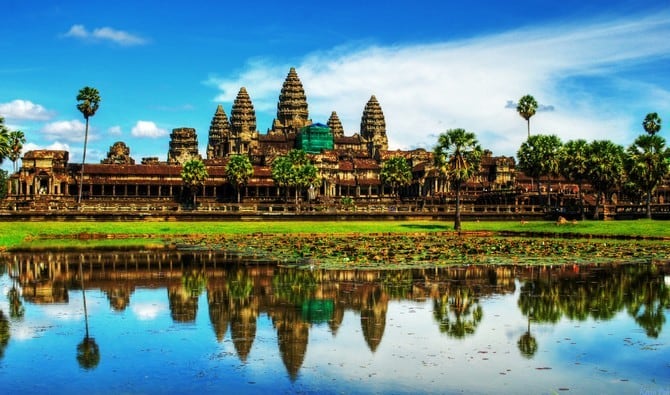No matter the religion, temples will always remain as true testaments of the people’s devotion and also their amazing ideas and skills. Most of our history temples were the most important buildings in every setting, with the greatest minds working on them to make these structures as imposing as possible.
These incredible buildings represent the unique way in which worshipers have seen their divinity, with their perspective being one of the main sources of inspiration for these gorgeous designs. Built to last, it’s fantastic that we can still admire temples from 5,000 years. That’s why today we’re going to take a closer look at the 15 most amazing temples in the world.
15. Temple of Hephaestus in Athens, Greece
This gorgeous Greek temple is incredibly well preserved even if it was built 2,500 years ago when Pericles started his plan to transform the city of Athens into the center of Greek culture and power. According to scholars it took nearly three decades to complete, being inaugurated in 416-415 BC. During its long history the temple served as a Greek Orthodox church from the 7th century until the 19th when it was restored to its original purpose.
14. Philae Temples on Agilkia Island in Egypt
The original location of the temple was near the First Cataract of the Nile River but the area was flooded frequently and thus the complex was moved to the nearby island as a part of the UNESCO Nubia Campaign project that wanted to protect the priceless buildings until the completion of the Aswan High Dam. The temple dates from 380 B.C. and it was built to worship Isis with other temples and shrines in its vicinity dedicated to Hathor and Harendotes.
13. Lotus Temple in New Delhi, India
The House of Worship for the Baha’i was built in 1986 and it’s one of the most important temples from India. The expressionist aesthetic was designed by Fariborz Sahba and it won a lot of architectural awards for its highly impressive lotus shape. The temple is open to everyone, no matter of their religion, that’s why it attracted a very large number of visitors, including as many as 150,000 people in a single day for Hindu celebrations.
12. Thatbyinnyu Temple in Bagan, Myanmar
This jaw dropping temple was built in 1,144 A.D. by King Alaung Sithu to be the tallest structure in the country. Aside from it’s impressive proportions, the Thatbyinnyu temple is also beautifully decorated with artworks that reflect the attributes of Lord Buddha.
11. Swaminarayan Akshardham Temple in New Delhi, India
The newest temple in our list and also the largest Hindu temple in the world was completed back in 2005. It’s the second monument developed by the spiritual leader Pramukh Swami Maharaj with the help of 3,000 volunteers and 7,000 artisans. It spreads over 59 acres and it is a massive complex which also features a theater, musical fountain, robots, a boat ride, amazing gardens and exhibition areas.
10. Golden Temple in Amritsar, India
The original name of this stunning temple is Harmandir Sahib which means “The abode of God”, pretty accurate for this lavish temple, right? The structure has been built during the 16th century for Sikhs. The Adi Granth, their most sacred text has the first draft here, which is why this temple is a considered a holy place, bringing over 100,000 people each day for worship.
9. Gawdawpalin Temple in Bagan, Myanmar
This marvelous Buddhist place of worship was built in the 12th century and it is the second tallest temple in the region with a layout and aesthetic similar to that of the Thatbyinnyu Temple. The Gawdawpalin temple went through a heavy earthquake in 1975 and suffered damages that led to its reconstruction.
8. Medinet Habu in the West Bank of Luxor, Egypt
The exact date when the structure was built is uncertain, but it was some 5,000 years ago. The purpose of the temple is to celebrate the reign of Ramesses III, the last New Kingdom king that had any authority over Egypt. The pharaoh is also buried here, a place with amazing artwork that’s a great source of information about the advent and defeat of the Sea Peoples during that period.
7. Temple of Heaven in Beijing, China
The Temple of Heaven is a Taoist temple built during the 15th century and used for the annual prayer to Heaven that was made by the emperors of the Ming and Qing dynasties to help with the crops. It’s an incredible complex of religious buildings totally worth visiting.
6. Borobudur, Indonesia
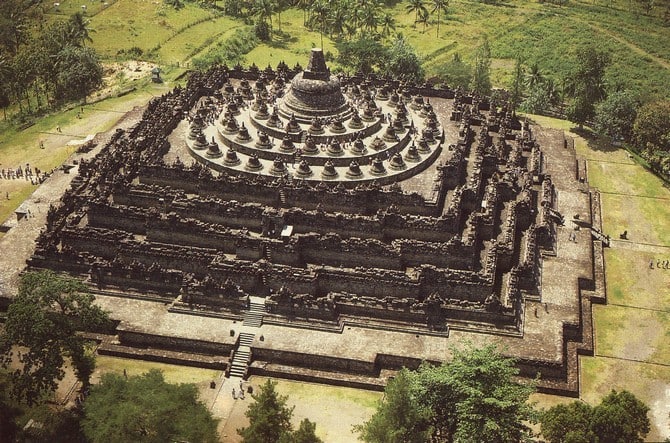
Borobudur is largest Buddhist monument in the world and also one of the Seven Wonders of the World. A UNESCO World Heritage Site, this huge temple has nine stacked platforms with a central dome on top, featuring 2,672 relief panels as well as 504 Buddha statues. It was built in the 9th century in the Javanese Buddhist architecture that combined the concept of Nirvana with the indigenous ancestor worship of Indonesia, a combination that makes this temple truly one of a kind.
5. Abu Simbel in the Aswan Governorate of Egypt
The complex is comprised of two large rock temples which are part of the Nubian Monuments complex that is a UNESCO World Heritage Site. The temples were carved out of the mountainside in the 13th century B.C. when the Pharaoh Ramesses II was reigning. This would be his resting place next to his queen Nefertari, with artworks commemorating his victory in the Battle of Kadesh. The entire complex had to be relocated in 1968 to prevent its submersion during the creation of Lake Nasser and it’s now placed on an artificial hill made from a domed structure right above the Aswan High Dam reservoir.
4. Mahabodhi Temple in Bodh Gaya, India
The mind blowing Mahabodhi temple was built in the place where it was thought that Siddartha Gautama attained enlightenment, so it’s clear why this sacred place is one of the most important religious sites in the world. The UNESCO World Heritage Site dates from 350 B.C., around 200 years after the Buddha sat under the tree to meditate.
3. Temple of Confucius in Qufu, China
The most renowned temple of Confucius lies in Qufu, where the philosopher himself and many of his descendants were buried. The Temple was entitled a UNESCO World Heritage Site in 1994 and it is a part of a larger complex spreading over 16,000 square meters. The original temple was built in 479 B.C. but due to several fires it went through no less than 15 major renovations.
2. Karnak in Egypt
This is the second largest religious site in the world, featuring three main temples from which the largest is the Hypostyle hall that’s comprised of 134 columns with a height of 60 feet each. The complex started to be built during the reign of Senusret I and continued during the Ptolemaic period with most buildings dating from the New Kingdom. Today it is an open-air museum and when it comes to historical sites in Egypt, only the Giza Pyramids receive more visits. The main parts are the Precinct of Amun-Re, the precinct of Mut, the precinct of Montu and the Temple of Amenhotep IV which was destroyed once the builder died.
1. Angkor Wat in Siem Reap, Cambodia
The splendid Angkor Wat is the largest religious monument in the world. It was originally the Hindu capital of the Khmer Empire and as time passed it was transformed into a massive Buddhist temple. Built in the early 12th century by Khmer King Suryavarman II and dedicated to Vishnu, this jaw dropping temple features classic Khmer architecture which became a symbol of the country. It’s one of the most visited sites in the world, with a ton of visitors coming every year in Cambodia to check out the amazing harmony and grandeur of the “City of Temples”.
Contents
- 15. Temple of Hephaestus in Athens, Greece
- 14. Philae Temples on Agilkia Island in Egypt
- 13. Lotus Temple in New Delhi, India
- 12. Thatbyinnyu Temple in Bagan, Myanmar
- 11. Swaminarayan Akshardham Temple in New Delhi, India
- 10. Golden Temple in Amritsar, India
- 9. Gawdawpalin Temple in Bagan, Myanmar
- 8. Medinet Habu in the West Bank of Luxor, Egypt
- 7. Temple of Heaven in Beijing, China
- 6. Borobudur, Indonesia
- 5. Abu Simbel in the Aswan Governorate of Egypt
- 4. Mahabodhi Temple in Bodh Gaya, India
- 3. Temple of Confucius in Qufu, China
- 2. Karnak in Egypt
- 1. Angkor Wat in Siem Reap, Cambodia

